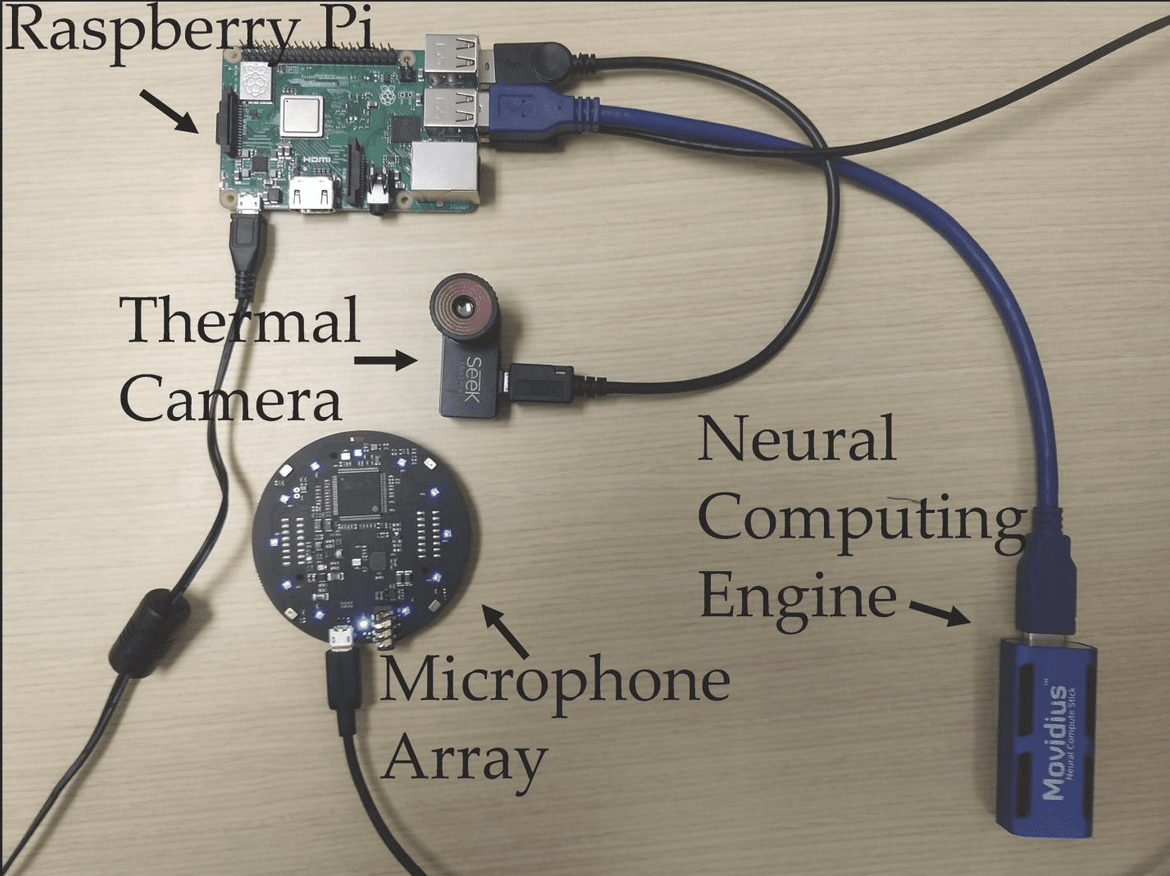A new AI-powered system monitors coughing sounds to understand where the coronavirus is spreading.
The FluSense device first detects coughing and crowd sizes in real-time. It then analyzes the data to predict the progress of COVID-19 and other respiratory diseases.
These insights could guide public health responses to the pandemic, such as the allocation of medical supplies, travel restriction, and vaccine campaigns.
[Read: This startup will map the coronavirus spread by looking at your poo]
“I’ve been interested in non-speech body sounds for a long time,” said researcher Tauhidur Rahman, an assistant professor of computer and information sciences at the University of Massachusetts Amherst.
I thought if we could capture coughing or sneezing sounds from public spaces where a lot of people naturally congregate, we could utilize this information as a new source of data for predicting epidemiologic trends.
How FluSense works
The FluSense system captures cough sounds through a collection of microphones and people via a thermal camera that detects body heat.
The data they collect is processed through a Raspberry Pi computer, which is connected to a neural network that recognizes the sound of coughs. The system then counts the number of coughs and people to predict where the coronavirus is spreading.

To test the system, then researchers encased the FluSense devices in boxes the size of a large dictionary and put them in four healthcare waiting rooms at the university’s hospital.
Over seven months, it analyzed more than 350,000 thermal images and 21 million audio samples from the public waiting areas.
The system accurately identified coughs 81% of the time. Not bad, but more work will be needed to show it can work across different locations. That’s unlikely to be finished during the current outbreak, but it may be ready when the next coronavirus wave arrives.
Get the TNW newsletter
Get the most important tech news in your inbox each week.





